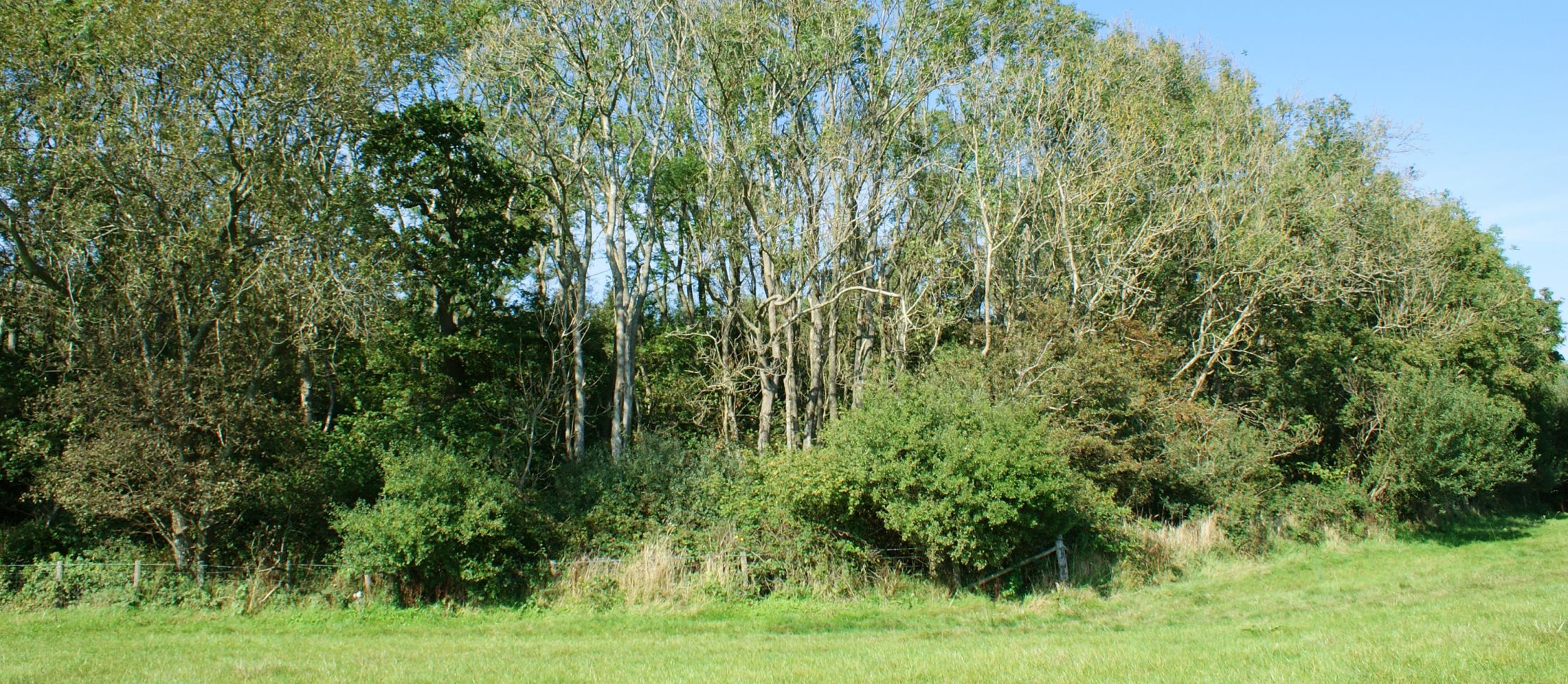
Ash trees in Asholt Wood, Sept 2014.

Ash trees in Asholt Wood, Sept 2014.
Almost 1000 species use ash including wood mice, liverworts, wrens, blue tits, bats, lichens, fungi and beetles. Bullfinches will eat ash keys in winter when food is scarce. The caterpillars of many kinds of moth feed on ash leaves.
Many lichens are hosted by ash. In the world of lichens, 536 species are found on Ash, 220 of which are nationally rare or scarce, 6 being given special protection under the Wildlife Countryside Act. . According to Oliver Rackham, author of the brilliant book The Ash Tree, the ash is the last refuge of many declining tree lichens, especially those that once grew on elms before they fell prey to Dutch Elm disease. King Alfreds Cakes (Daldinia concentrica) are specific to ash, and a number of beetles that live only on this fungus are dependent solely on ash for survival.
An important research note written by by Alice Broome and Ruth J. Mitchell was published in July 2017 by Forest Research which summarises the various studies that have been undertaken. This research notes that the alternative tree species that support most ash-associated species do not replicate the ecosystem functions provided by ash.
Two-thirds of SSSI’s (Sites of Special Scientific Interest) include important ash woodland, with some sites being of European importance, listed in Habitats Directive.
The ash is a significant tree for about 89 species of invertebrates, 65% found on living trees, the remainder are sacrophagous/saproxylic (feeding on/living in decaying wood or dead timber and roots.) Live ash is the sole foodplant for around 34 species of invertebrates (4 gall mites and 26 insects) with an additional 13 insect species using ash and a few other food plant species. Where ash is a prominent tree at local/regional level, it may be key to maintaining a richness of biodiversity. It is the main host tree for the Cramp ball fungus (Daldinia concentrica) within which 6 species of beetles breed, the majority are totally dependent on this fungus, which can be very scarce and normally insufficient of absent on other trees.
The globally endangered Violet click beetle (Limoniscus violaceus), is dependent on ash at 2 of 3 locations in the UK. The Violet click beetle is a focus of the Back from the Brink Ancients of the Future Project led by Buglife, aiming to conserve species reliant on ancient and veteran trees.
Many species have evolved the high risk strategy of being totally reliant, or ‘obligate’, upon Ash for their survival. One such species is the fascinating Cauliflower Gall Mite (Aceria fraxinivora). Though only 0.5mm in length when fully grown, the presence of these tiny sap-sucking Arachnids is betrayed by the curiously shaped galls they stimulate to form on Ash keys.
Ash is a food-plant for the caterpillar of the privet hawk moth our largest, and arguably most handsome, resident hawk moth. The references to privet (Ligustrum) within both the common and scientific names of the Hawk Moth Sphinx ligustri are a misnomer. Privet is, or at least was, a common garden hedging plant and thus offers perhaps the greatest opportunity for contact between people and this magnificent moth, or more specifically its caterpillar.
Read more from local entymologist Tony Harwood